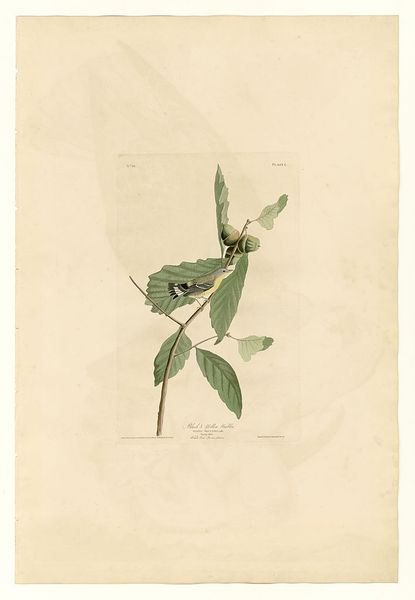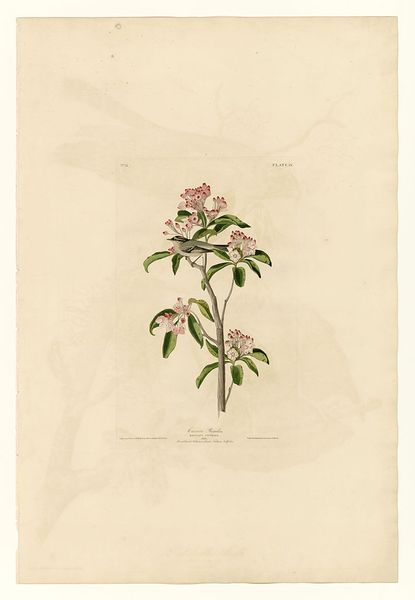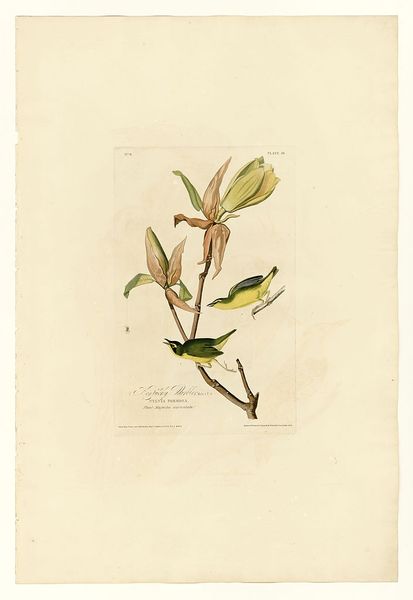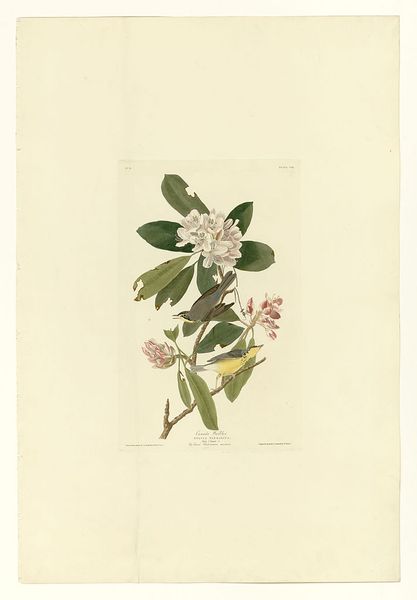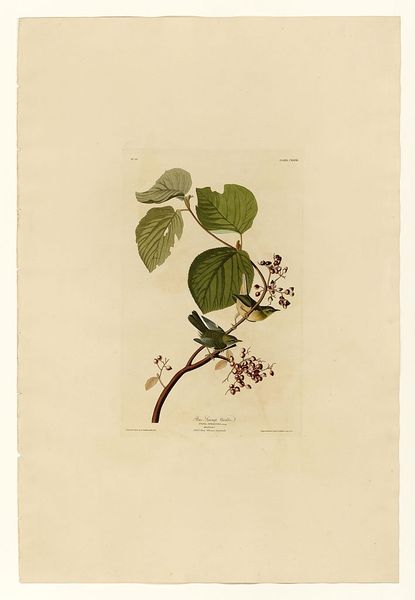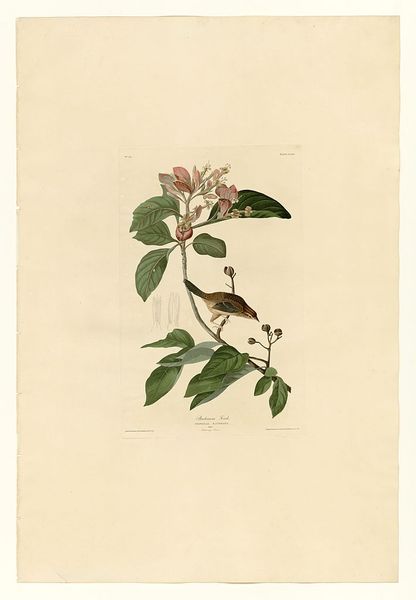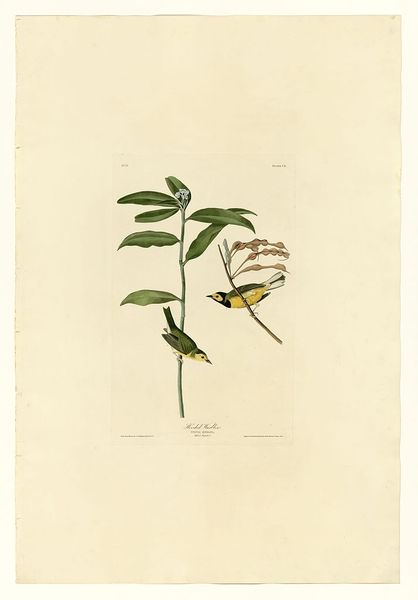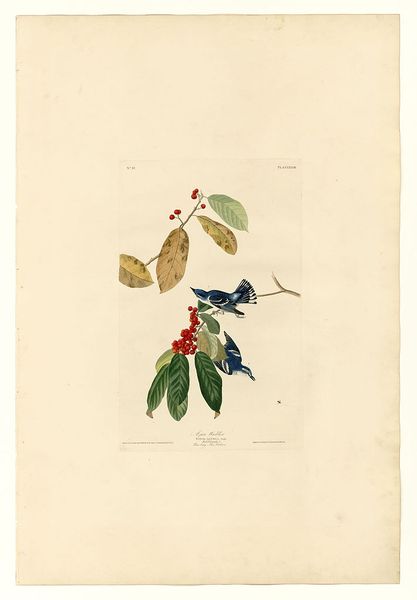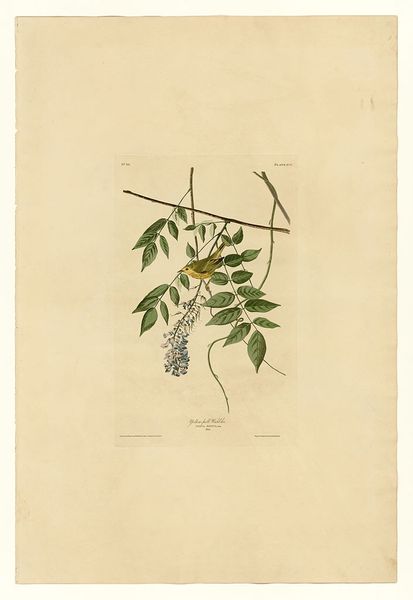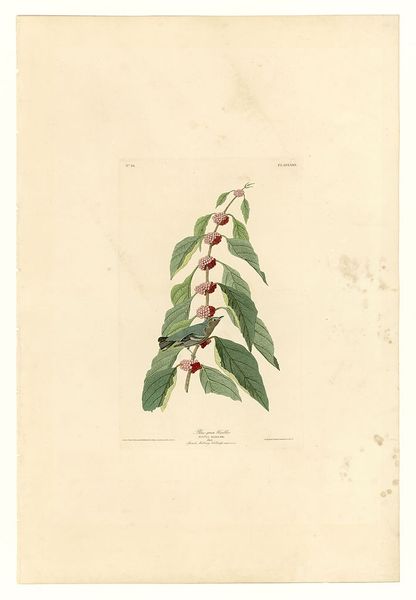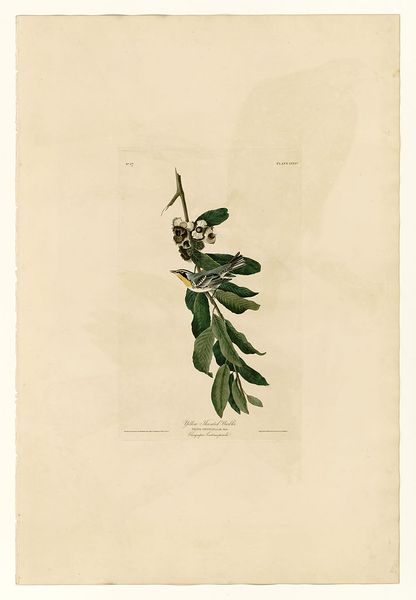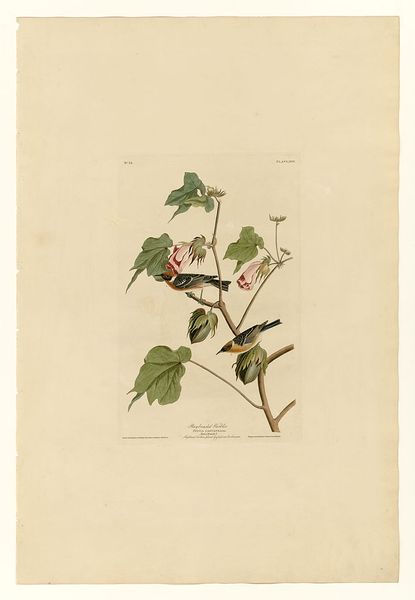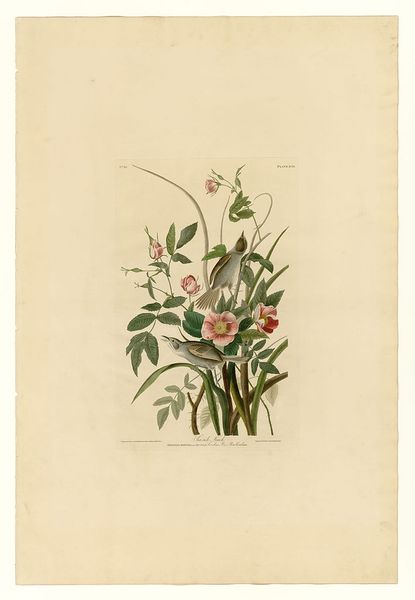
drawing, painting, paper, watercolor
#
drawing
#
toned paper
#
painting
#
old engraving style
#
curved letter used
#
paper
#
watercolor
#
food illustration
#
botany
#
botanical art
#
realism
Copyright: Public domain
Editor: This is "Plate 5. Bonaparte's Flycatcher" by John James Audubon, rendered in watercolor and drawing on paper. It's interesting how the bird is so small compared to the leaves and the dense red flower, almost swallowed by the plant's forms. What jumps out at you in terms of the image's composition? Curator: The most striking aspect from a formalist perspective is the strategic arrangement of forms. Notice the asymmetrical balance, how the weight of the reddish blossom at the top is visually counteracted by the spread of foliage and the bird’s positioning. The artist employs a sophisticated interplay between positive and negative space, the blank background emphasizing the density of the plant. Do you see how the light catches certain leaves, creating a visual rhythm? Editor: I see it now, the light definitely guides the eye. And it's like a dance between the smooth, almost sculptural leaves and the much more detailed flower. Is the contrast intentional? Curator: Undoubtedly. The artist is deliberately playing with texture and detail to create visual interest. Consider the smooth gradient of color on the leaves versus the tight clustering and detailed rendering of the individual florets. It is through these oppositions—smooth/rough, light/shadow, empty/full—that the image obtains its dynamic visual structure. The paper itself appears to have a slight tone to it, adding a warmth to the image as a whole. The artist creates an internal visual logic. Editor: It’s amazing how much can be said just by looking at the elements themselves! Thanks. I'll definitely pay closer attention to composition in the future. Curator: Indeed. Understanding an image’s construction deepens one’s understanding of its effect. We build a more nuanced reading of what that image conveys through line, shape, and color relationships.
Comments
No comments
Be the first to comment and join the conversation on the ultimate creative platform.
